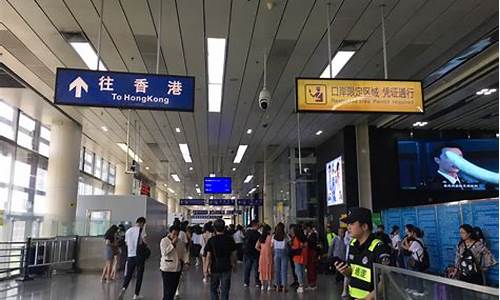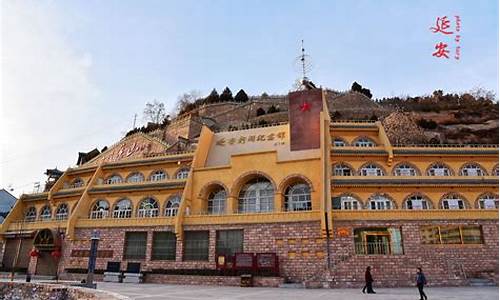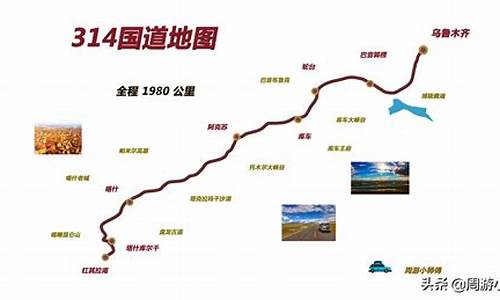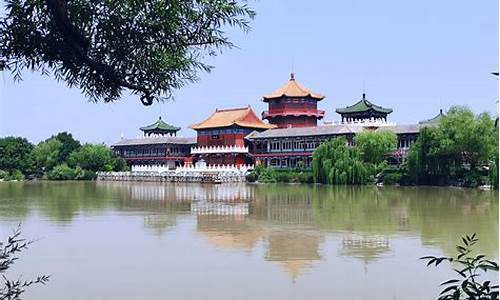新加坡攻略英语_新加坡旅游英语
1.去新加坡旅游,补英语
2.留学新加坡,英语水平很重要!
3.新加坡名胜景点英文名
4.用英语介绍新加坡

新加坡英文:Singapore。英?[?si?g?'p?:] ;美?[?si?g?'p?:]。 ?
词汇搭配:
Singapore dollar 新加坡元。
例句:
用作名词 (n.)。
1、Is Singapore a tropical country?
新加坡是热带国家吗?
2、Singapore is near the equator.
新加坡位于赤道附近。
近义词的用法:
Singaporean英?[?s?'pri?n];美?[?s?'pri?n]。
n.?新加坡人;adj.?新加坡的;新加坡人的。
英英释义Noun:
an inhabitant of Singapore.
新加坡居民。
例句:
用作名词 (n.)。
1、Although he is not well-to-do, he is still a proud Singaporean.
尽管不富裕,这位先生仍然是个自豪的新加坡人。
2、Thus you need to create a common perspective, a Singaporean perspective.
因此你们确实有必要建立一种共识,一种使得大家都能够从新加坡人的角度和观点来看问题的共识。
去新加坡旅游,补英语
Singapore (Chinese: 新加坡; pinyin: Xīnjiāpō; Malay: Singapura; Tamil: , Cingkappūr), officially the Republic of Singapore, is an island city-state located at the southern tip of the Malay Peninsula, lying 137 kilometres (85 mi) north of the equator, south of the Malaysian state of Johor and north of Indonesia's Riau Islands. At 710.2 km2 (274.2 sq mi),[6] Singapore, a microstate and the smallest nation in Southeast Asia, is by orders of magnitude larger than Monaco, San Marino, Andorra and Vatican City, the only other surviving sovereign city-states.
Before European settlement, the island now known as Singapore was the site of a Malay fishing village at the mouth of the Singapore River. Several hundred indigenous Orang Laut people also lived along the nearby coast, rivers and on smaller islands. In 1819, the British East India Company, led by Sir Stamford Raffles, established a trading post on the island, which was used as a port along the spice route.[7] Singapore became one of the most important commercial and military centres of the British Empire, and the hub of British power in Southeast Asia.
During the Second World War, the British colony was occupied by the Japanese after the Battle of Singapore, which Winston Churchill called "Britain's greatest defeat".[8] Singapore reverted to British rule in 1945, immediately after the war. Eighteen years later, in 1963, the city, having achieved independence from Britain, merged with Malaya, Sabah, and Sarawak to form Malaysia. However, the merger proved unsuccessful, and, less than two years later, it seceded from the federation and became an independent republic within the Commonwealth of Nations on August 9, 1965. Singapore was admitted to the United Nations on September 21 of that year.
Since independence, Singapore's standard of living has risen dramatically. Foreign direct investment and a state-led drive to industrialization based on plans drawn up by the Dutch economist Albert Winsemius have created a modern economy focused on industry, education and urban planning.[9] Singapore is the 5th wealthiest country in the world in terms of GDP (PPP) per capita.[10] In December 2008, the foreign exchange reserves of this small island nation stood at around US$174.2billion.[11] The Singapore government had for the first time in history tapped into her official reserves and withdrew some S$4.9 billion with the approval of the President. The funds were then used as part of the S$20.5 billion resilience package unveiled by Finance Minister Tharman Shanmugaratnam on 5 February 2009. As of January 2009, Singapore's official reserves stands at US$170.3 billion.
In 2009, the Economist Intelligence Unit ranked Singapore the tenth most expensive city in the world in which to live—the third in Asia, after Tokyo and Osaka.[12]
Singapore consists of 63 islands, including mainland Singapore. There are two man-made connections to Johor, Malaysia — Johor-Singapore Causeway in the north, and Tuas Second Link in the west. Jurong Island, Pulau Tekong, Pulau Ubin and Sentosa are the largest of Singapore's many smaller islands. The highest natural point of Singapore is Bukit Timah Hill at 166 m (545 ft).[citation needed]
The south of Singapore, around the mouth of the Singapore River and what is now the Downtown Core, used to be the only concentrated urban area, while the rest of the land was either undeveloped tropical rainforest or used for agriculture. Since the 1960s, the government has constructed new residential towns in outlying areas, resulting in an entirely built-up urban landscape. The Urban Redevelopment Authority was established on 1 April 1974, responsible for urban planning.[citation needed]
留学新加坡,英语水平很重要!
我觉得学一下日常用语呀,什么的就很好!因为出去旅游嘛,就要多跟人沟通,就日常用语就最好了!比如说,你要是跟新加坡小孩聊天肯定要找个共同聊得来的话题,你可以问
what kinda movie you like?
I like your shirt! Where did you get it.
what subject do you hate most in the school?
这些都是一下可以产生共鸣的话题,都可以拉开一系列话题,回答的时候也自然一点,不要象背课本一样僵硬
夸赞事物时可以用,yea!that's amazing
that's cool stuff!I would like one, too
I never seen it before, it's gorgeous!
再来就是一些常识啦,一些旅游必备的词汇啦
比如说,waiting room, Toilet 这些简单的LZ应该都会,英语那么好
boarding pass 登机卡
passport 护照
Identity Card 身份证
aisle 靠走道的座位
perfume 香水
tax free 有时候买东西会问你需不需要tax free或者tax back就是指你在新加坡买的东西然 后可以再去机场的时候退税
receipt 小票
leisure centre 休闲娱乐中心
charge 收费
changes 小费,零钱
soft drink 碳酸饮料
still water 矿泉水
fizzy drink 汽水
starter 开胃菜 main course 主餐 desert 甜点
where can I change money? 兑钱
currency rate 汇率
notes 纸钞
signature 签名
shampoo 洗发水
shower gel 沐浴露
其他的貌似也没什么用得着得了,这些都是我自己想的-0-楼主如果需要任何其它的再补充吧!
觉得好请给分~
新加坡名胜景点英文名
想要留学新加坡,英语水平是非常重要的。不同学历的学生,需要通过不同的途径来提升自己的英语水平,才能更好地适应新加坡的学习环境。
高中以下学历高中以下学历的学生,需要先通过3-6个月的语言学校课程,再以插班生身份入读新加坡中学,与当地学生一同升学。
高中以上学历高中以上学历的同学们,需要高考成绩超过当地一本分数线20分以上,并提供托福550分以上的成绩。如果英语稍显薄弱,可以先参加几个月的语言培训课程。
本科以上学历本科以上的学霸们,可以直接申请新加坡国立大学,但托福成绩需达到580分以上。如果英语水平不达标,可以先去新加坡当地的语言学校读语言强化课程。
提升英语水平不管你是高中以下、高中以上还是本科以上的学生,只要你对新加坡留学感兴趣,都可以通过语言学校或强化课程来提升自己的英语水平。
用英语介绍新加坡
新加坡的名胜中英文对照(大大小小的景点众多,难以列举详尽,仅有选择地列举一些):
Arab Street 阿拉伯街;
Chinatown 牛车水Bukit Timah Nature Reserve 武吉知马自然保护区;
Clarke Quay 克拉码头;
Esplanade – Theatres on the Bay 滨海艺术中心;
Fort Siloso西乐索炮台;
Geylang Serai 芽笼;
Jurong Bird Park 裕廊飞禽公园;
Kampong Glam 甘榜格南;
Little India 小印度;
Marina Bay 滨海湾;
Marina Bay Sands 滨海湾金沙;
Merlion Park 鱼尾狮公园;
National Museum of Singapore 新加坡国家博物院;
Newton Food Centre 纽顿熟食中心;
Night Safari夜间动物园;
Orchard Road 乌节路;
Resorts World Sentosa 圣淘沙名胜世界;
River Safari 河川生态园;
Singapore Art Museum 新加坡美术馆;
Singapore Botanic Gardens新加坡植物园
——National Orchid Garden 新加坡国家胡姬园;
——Shaw Foundation Symphony Stahe 邵氏基金交响乐台;
——Swan Lake 天鹅湖;
……
Singapore Zoo新加坡动物园;
St.Andrew's Cathedral圣安德烈座堂;
Sungei Buloh Wetland Reserve 双溪布洛湿地保护区;
Telok Ayer Market 老巴刹市场;
Tiger Sky Tower天空之塔;
Ubin Island 乌敏岛;
Underwater World新加坡海底世界;
Universal Studios Singapore 新加坡环球影城;等等。
自己可以整理一下:
ABOUT SINGAPORE
Singapore consists of the main island of Singapore and some 63 offshore islands. It is situated between latitudes 1°09'N and 1°29'N and longitudes 103°36'E and 104°25'E approximately 137 kilometres north of the Equator.
The main island is about 42 kilometres from east to west and 23 kilometres from north to south. Singapore's total land area, including that of the smaller islands, is 697.1 square kilometres.
Singapore's immediate neighbours are Malaysia (Peninsular Malaysia to the North, Sarawak and Sabah to the East), Brunei Darussalam and Indonesia.
Being very close to the Equator, Singapore's climate is characterised by abundant rainfall, relatively uniform temperature and high humidity throughout the year. December is the coolest month of the year while May is the warmest. The mean daily temperature is 26.8°C.
The resident population of Singapore, comprising Singapore citizens and permanent residents, was estimated at 3,437,300 in June 2003. Singapore is a multiracial society. Malays form 13.8% of Singapore's population, while Chinese and Indians make up 76.2% and 8.3% respectively. Other races make up 1.7% of the population.
The official languages in Singapore are Malay, Chinese (Mandarin), Tamil and English. Malay is the national language and English is the language of administration. The Constitution allows every person the right to profess and practise his religion and to propagate it. The main religions in Singapore are Buddhism, Taoism, Islam, Christianity and Hinduism.
Singapore is a republic with a parliamentary system of government. A written constitution provides for the organs of state, namely the executive, the legislature and the judiciary. President S R Nathan is the current Head of State. The current Prime Minister, Lee Hsien Loong, leads the Cabinet in the administration of the Government. The Prime Minister and other Cabinet members are appointed from among the Members of Parliament, of which there are currently 94.
The flag of Singapore consists of two equal horizontal sections, red above white. In the upper left canton is a white crescent moon beside five white stars within a circle. Red symbolises universal brotherhood and equality of man, while white signifies pervading and everlasting purity and virtue. The crescent moon represents a young nation on the ascendant, illuminated by the ideals of democracy, peace, progress, justice and equality as signified by the five stars.
Information obtained from the Singapore 2004 book published by the Ministry of Information, Communications and the Arts.
声明:本站所有文章资源内容,如无特殊说明或标注,均为采集网络资源。如若本站内容侵犯了原著者的合法权益,可联系本站删除。












